
Piercing the veil
A new exhibition at Buxton Contemporary finds a rich complexity in the shadowy terrain between life and death.

Artist Peter Tyndall, Peter Tyndall exhibition, Buxton Contemporary, the University of Melbourne, 2022-2023, courtesy Anna Schwartz Gallery, Melbourne.
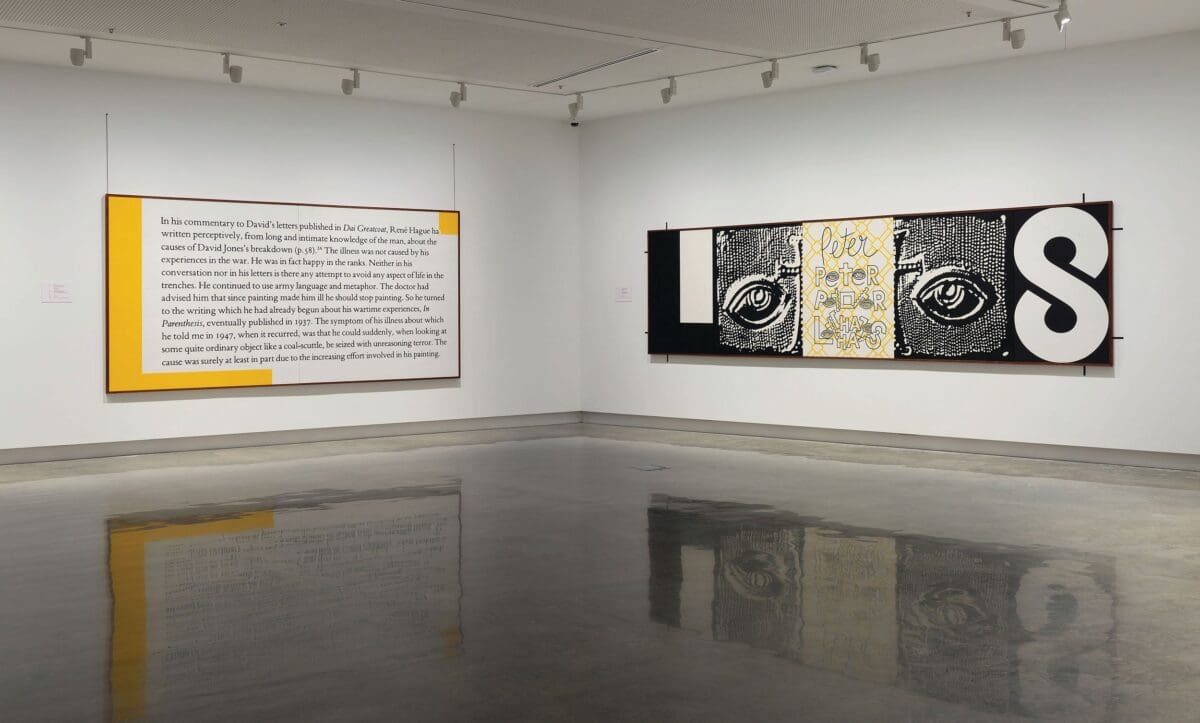
Installation view of Peter Tyndall exhibition, Buxton Contemporary, the University of Melbourne, 2022-2023, courtesy Anna Schwartz Gallery, Melbourne. The artist and Anna Schwartz Gallery Melbourne and Museum of Contemporary Art. Photography by Christian Capurro.
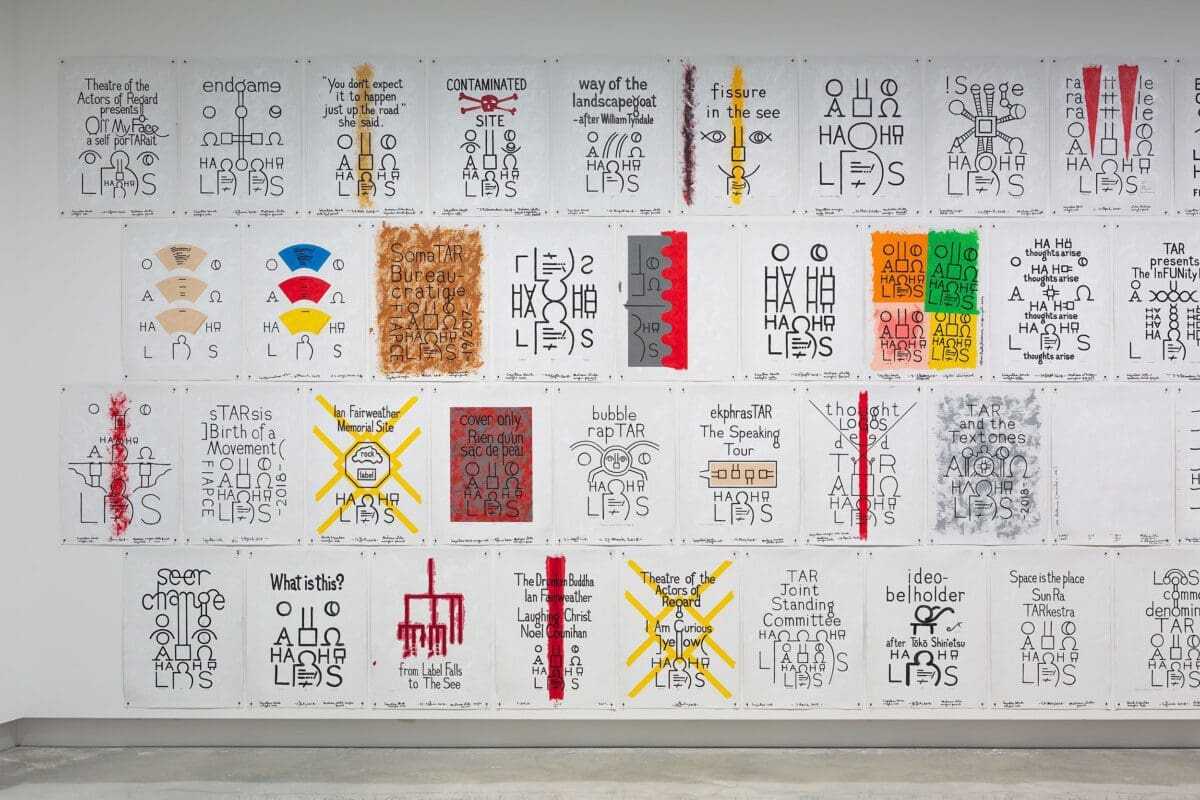
Installation view of Peter Tyndall exhibition, Buxton Contemporary, the University of Melbourne, 2022-2023, courtesy Anna Schwartz Gallery, Melbourne. The artist and Anna Schwartz Gallery Melbourne and Museum of Contemporary Art. Photography by Christian Capurro.
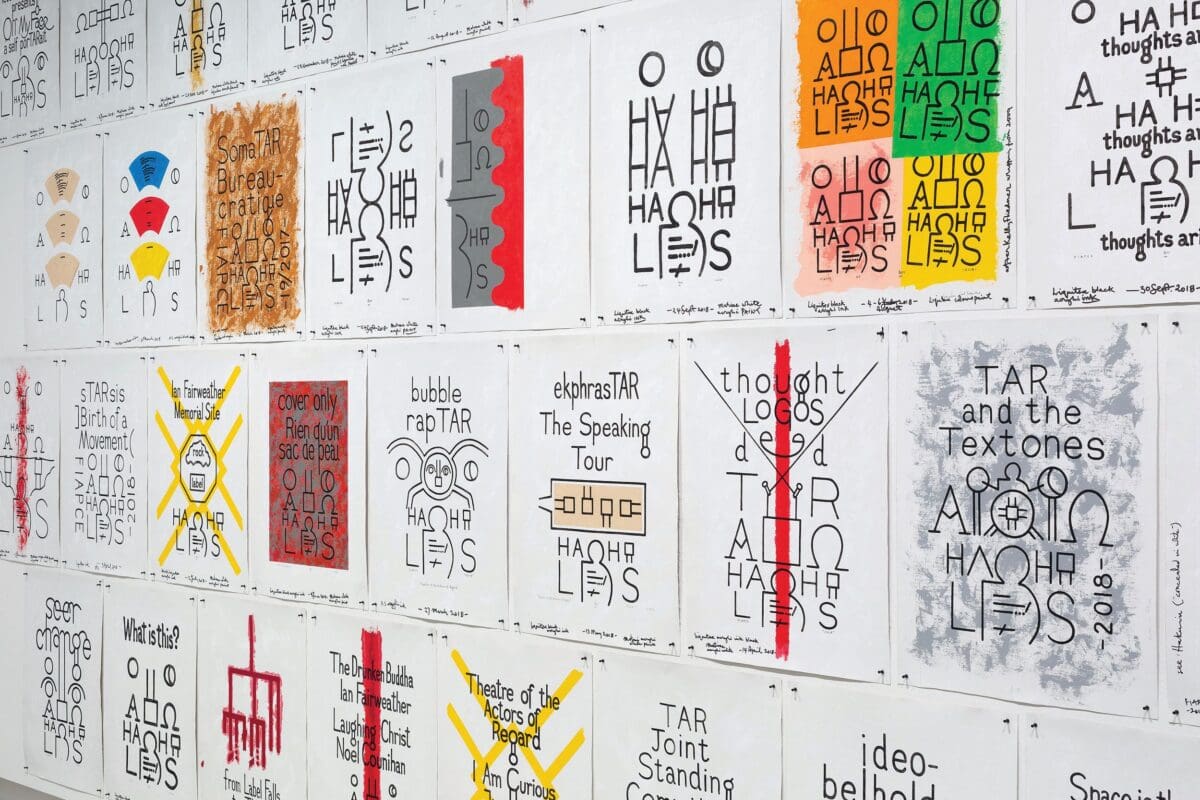
Installation view of Peter Tyndall exhibition, Buxton Contemporary, the University of Melbourne, 2022-2023, courtesy Anna Schwartz Gallery, Melbourne. The artist and Anna Schwartz Gallery Melbourne and Museum of Contemporary Art. Photography by Christian Capurro.
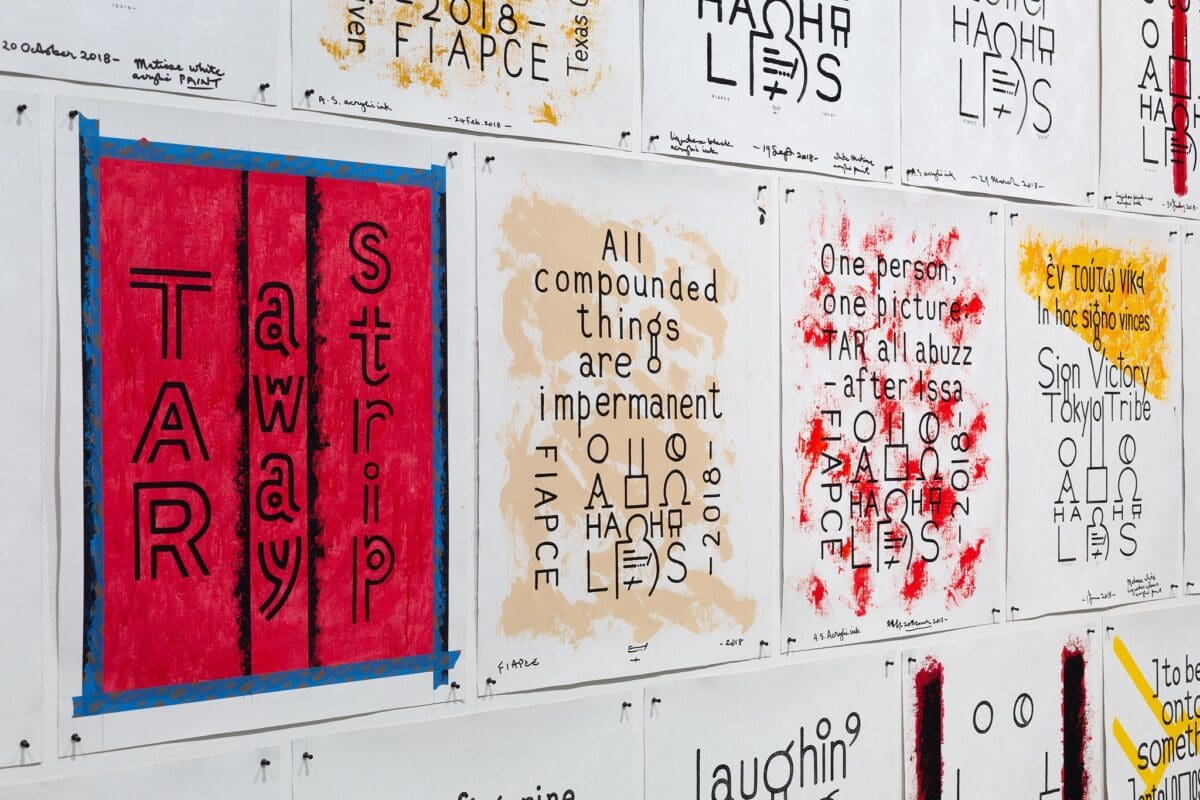
Installation view of Peter Tyndall exhibition, Buxton Contemporary, the University of Melbourne, 2022-2023, courtesy Anna Schwartz Gallery, Melbourne. The artist and Anna Schwartz Gallery Melbourne and Museum of Contemporary Art. Photography by Christian Capurro.
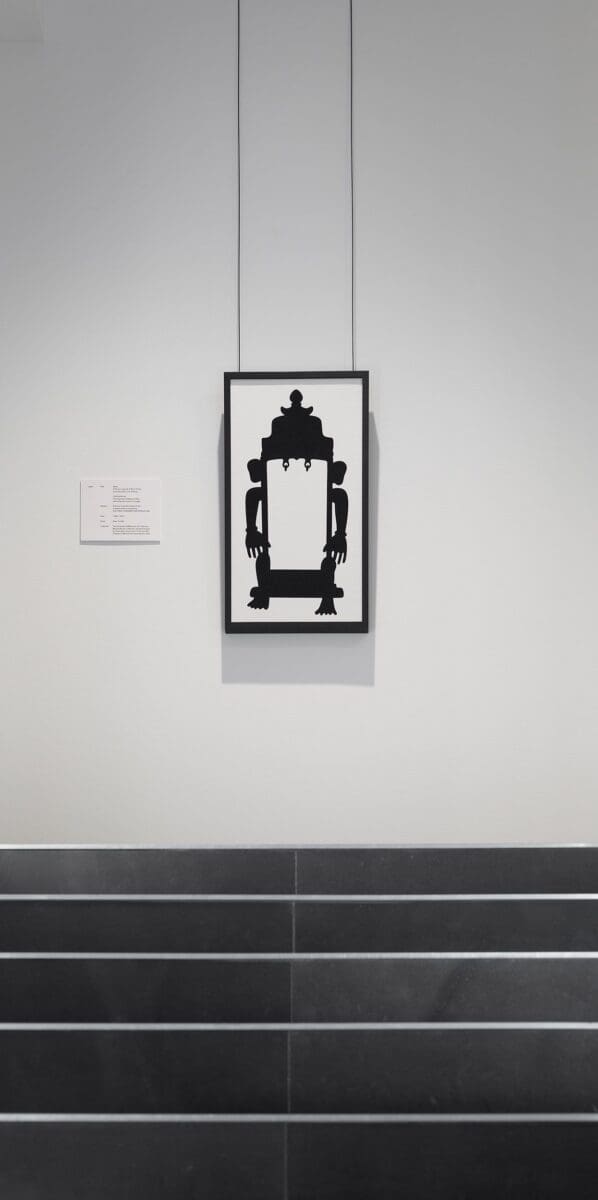
Installation view of Peter Tyndall exhibition, Buxton Contemporary, the University of Melbourne, 2022-2023, courtesy Anna Schwartz Gallery, Melbourne. The University of Melbourne Art Collection, Michael Buxton Collection. Donated through the Australian Government’s Cultural Gifts Program by Michael and Janet Buxton, 2018. Photography by Christian Capurro.
For over 50 years, Peter Tyndall has relentlessly explored what it means to look at art. Coming to prominence in 1970s Melbourne, his conceptual approach to painting is defined by the repetition of one image: an empty rectangle suspended by two lines, akin to an empty picture plane hanging in a gallery. With an extraordinary retrospective currently showing at Buxton Contemporary—which canvasses Tyndall’s earlier works through to his scenes of people looking at art, and his textual paintings—Tyndall talks about seriousness and humour, and how he looks at a work of art.
Tiarney Miekus: Your retrospective clearly captures a repeated shape throughout your work from the 1970s to now, which is a minimalist representation of a hanging picture, whether it’s singular, in a geometric grid, or even the exhibition hang itself. What compelled you to the image of an empty picture plane?
Peter Tyndall: Early on [in my practice] I said to a friend, in a moment of lightheartedness, “If I put a line between this inside rectangle and this outside rectangle, we’d have the image joined up to its own object, or the object to its own image.” And if I put a frame around that and I hung that in a gallery, then that would be an image of interconnectedness. It was in that moment, in that work, that I understood in a profound way that everything was not a thing-in-itself, but part of a boundless interconnection.
Previously with the [earlier] abstract works, I’d been working within a rectangular format, which is the usual for painters. And I’d reduced the content of that rectangle down to an emptiness that many artists around the world had come to in the 1960s or 1970s. We can go back much earlier to Malevich and others with black and white rectangles. Many felt this was an end point in representation, but it was when I was able to see that there’s something interesting about an empty rectangle as an image and joining that up to the object [the actual hanging artwork]. And I know this can sometimes sound confusing! But it sets up a meta scene that has something to do with the difference between an object and its image in the same way as with language: we can observe the difference between a word and its object. In that breakthrough I had rejoined the world. Or recognised that the world wasn’t composed of separate entities; it’s flowing, flexing.
TM: That touches on two facets of your work; when you began painting it was just before postmodernism was coming to Australia, during a conceptual turn. But you later developed an interest in Buddhism. It sounds like you’re describing a meeting of the two?
PT: I’m seeing that connection to Buddhism retrospectively now. In my first of two years of architecture studies, I encountered John Cage’s double LP, Indeterminacy. He would tell little Zen stories and David Tudor would play fragments of piano music. But they recorded without either being aware when the other was playing or speaking; that was part of the indeterminacy. So, I encountered Cage and Zen and that notion of things being unfixed, very early on. And I quickly went out and bought all the John Cage books I could get. While that was then in advance of any art practice of mine, I can see in retrospect those ideas being quite foundational.
You mentioned post-modernism—I don’t think I heard that word until the late 70s. It was before appropriation art was a thing, or before post-modernism was a thing—but many of my paintings would later fit that category. I came to that through my own attempt to deal with a constant emptying [of the canvas frame] but while recognising what kept flowing in through my own projections and my own connoisseurship—and as someone who didn’t do art in secondary school, nor went to art school, and who was still learning about art as an escapee from architecture. I was self-teaching and discovering without a great degree of guidance.

TM: You were also coming up in a cultural moment with artists and friends like John Nixon and Jenny Watson, many of whom had firm ideas about conceptual art. How much would that have influenced your early work?
PT: Yes, there was a group of us in Melbourne, and there was another group in Sydney that I contacted later. But in Melbourne there was John and Jenny, who were a couple then, and Howard Arkley and Elizabeth Gower—the five of us met early on, at the beginning when we were all young artists. We spent a lot of time together, would go to openings together, discuss work. We were all very serious and ambitious. I think that’s what we recognised in each other.
I was perhaps more exploratory, and in some senses still am. With John, he saw that Australian art history needed a comparable intervention such as Constructivism had made in European history. And through our tyranny of distance, and for whatever other reasons, we were uninformed about certain [artistic] ideas. And it feels to me as if John thought, “Well, let’s redo that history in Australia.” It’s a very, very interesting project. But he and I were very different artists: we both had a reform project, but mine wasn’t initially so apparent and came from my own intellectual critiques of the separate individual as opposed to the community and social realm.
And for males in Australia at that time, we had conscription to deal with. At the age of 20 we were all up for possibly going to Vietnam, so we were politicised. There was a general seriousness. But also, there was a heck of a lot of fun going on through music and other things, but one couldn’t avoid the political.
TM: I once interviewed you about John Nixon, and we talked about the word serious. And afterward you sent me an early artwork of yours which had the line, “If you’re really serious you should be laughing.” I still feel like it summarises your work so well, the comedy and philosophy. What’s the link, for you, between humour, seriousness and art making?
PT: It’s true, it was a core line. I remember when I was driving from Bendigo to Melbourne one time, and that line popped into my head. I actually stopped the car and wrote it down because it did seem summary. I’ve always found humour both pleasurable and a way of breaking open things which are hard to break open; seriousness upon seriousness sometimes has its limitations. And I suppose I’m almost falling into the trap now of explaining humour, which we should take as a given. But I used to listen to things like The Goon Show on ABC radio [a BBC program] for example, and I’m perhaps more inclined to that happy deconstruction or happy critique than the brow-knitted, serious type. I guess that’s just a personality inclination.
TM: Throughout many of your works, particularly the later works, is the repeated title: detail A Person Looks At A Work of Art/ someone looks at something… LOGOS/HA HA. You’ve built on that since the 1970s. How did that evolution come about?
PT: In November 1974 I came up with the pictorial image [of the empty rectangle with its lines of connection], but the title has taken a long time to evolve, going through various stages. From the first of my breakthrough paintings in the early 70s, I was starting to understand the role of the observer or the viewer, but with the titles I was calling that first group Untitled Painting #1, #2, etcetera.
And within a year, quite quickly, I’d done several hundred drawings of a fundamental scene with a suspended projection space and someone looking at it. And I would sometimes make a little jotting on the back of the drawing: a person looks at a work of art, or a man looks at a work of art, or a woman, or a child. After a while I settled on “a person”, and then refined that to “someone looks at something”. But that might have taken me two or three years to get to that point.
Then, in the late 70s, I started thinking about the line “detail” and realising what a small word it was, but also the implications of that at the start of the title—how huge that is. If someone is in an art gallery and looking at a work of art, a painting for instance, they refer to the title for some information—that’s the usual scenario. And traditionally, the artist is expected to provide a title. So, I thought, that’s an important opportunity to intervene between the art object and the information realm that the viewer finds themselves in. And a detail is a continuous part of something larger, so by implication it’s part of boundlessness until one provides an edge that says this is what it is. It’s a complex situation where you have an awareness of being part of something much larger, and that leads to a questioning.
TM: A questioning of…?
PT: Well, yes, exactly! Of what? I think that is the answer. It’s the fundamental question, which you sometimes find in Zen statements: “What is this?”
TM: When you’re looking at an exhibition of another artist’s work, are you having this meta thought process? Or do you look more plainly?
PT: Both. In the early stages when I was aware of interconnectedness, I remember finding in a catalog from an exhibition in England [Tantra at Hayward Gallery], a Hindu object of a silhouetted figure. But the inside was empty, cutaway except for two hanging hooks. And it said, “Supreme Goddess as Void, with projection-space for image.” So, I’ve taken quite a lot of my language from that. And this was realising that my breakthrough might be a breakthrough perhaps in Western art to some extent—but for half of the world, this was part of a meditation practice.
But going back to your question, I’m not at all dismissive [of other art]. It was me trying to work out where my breakthrough positioned myself and my work. I understand that within the relativity of image making, to some extent all art is folk art. I’m appreciative of the differences and the achievements of a huge number of artists in the world, and enjoy and appreciate their work at a relative level while also understanding small advances and achievements, and my own delight in colour and form and so forth. But, at the same time, understanding that they are inherently empty: that the cultural formations of the artwork are flowing most significantly through my own projections. This brings me back to a constant self-interrogation about the state of real—what is real?

TM: In terms of other people’s projections onto your work, there’re critics who see it from cynical to earnest. Where do you feel you sit?
PT: I’m not cynical. I’m always respectful of everybody’s best efforts. I’m earnest, yes. Those I admire go from hard edge philosophers through to The Goons—the opportunity for wisdom is everywhere. I’m more like an anthropologist that is neutral and interested.
TM: A recent profile of you mentioned that you were a dreamer as a child and were highly attuned to people having separate thoughts to your own. Have you thought about where that early self-reflexivity stemmed from?
PT: Well, I’ve always wondered, because we don’t know what others are thinking—was that unique to me or not? That was at the age of four or five, that meta thinking. Now, thinking about it, I had a Catholic upbringing in the 50s which included going to confession and being instructed in “examining one’s conscience” as a regular formal matter. I’ve wondered whether that might have made some difference because of its formality in examining thought, word, and deed. It’s not just an examination of conscience, but of consciousness itself.
It’s so strange thinking back to those times because it was so conservative and traditional, with Latin mass and all of that. And with Buddhism, a word like awareness, or even the notion of self, is part of the formal teaching as well. Whether one set me up for the other, I don’t know.
TM: For someone whose work focuses on the viewer and context, during your practice the internet and social media have become dominant ways that many people look at art. Has that meant anything for your work?
PT: I suppose I haven’t had to do it [social media and blogging], but I’ve been inclined to because I wish to engage with others. Since it’s a phenomenon in our time, I accept it just as another form of the same thing: a computer screen in one sense is no different to a canvas. We are still dealing with images and a history of images. We are still dealing with language. I remember years ago answering something with, “The only difference is the difference.”
Peter Tyndall
Buxton Contemporary (Melbourne VIC)
Until 16 April
This article was originally published in the March/April 2023 print edition of Art Guide Australia.